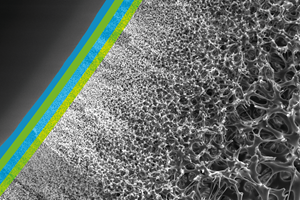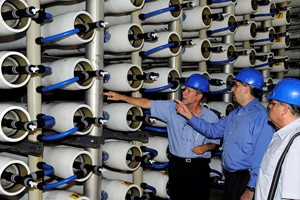Nano filtration is a technique that has prospered over the past few years. According to Lenntech, Nano filtration is mainly applied in drinking water purification process steps, such as water softening, decoloring and micro pollutant removal.
Bacterial contamination of water is a major cause of life threatening disease outbreaks, such as cholera or gastroenteritis. Therefore, there is a pressing need for small-scale filter systems that can purify water of bacteria and other harmful microorganisms. They must also be cheap, safe, portable and easy to use.
People have used silver for centuries to preserve potable water. Even in trace quantities, silver is a potent antibacterial and antifungal agent. Silver is now being packaged in nanoparticles - very small materials ten thousandth of the width of a human hair. They are composed of hundreds to thousands of silver atoms, either pure or with some type of coating. Because they are so small, they expose a large surface to the contaminants, and are thus very effective at killing microorganisms.
The global Nano Silver Market is expected to reach USD1,605 million by 2022, supported by a CAGR of 20.5 percent. The market is available in a number of physical and chemical forms such as metallic particles, silver ion, soluble silver compounds, and combinations that are available in solution, dispersion, colloidal, suspensions, and matrix of different substances (polymers, zeolites, and others).
The two main aspects that change the behavior of silver at Nano scale are:


- Higher surface to volume ratio: the large surface area favors the formation of silver ions that enhance its antibacterial effect
- The mobility in the human body (and, in principle, in other biological media)
Rise in application scope and demand from various end-user industries, funding support from government, and drop in Nano silver prices are key factors driving the market growth.
However, stringent environmental regulations and high manufacturing cost of Nano silver may hamper its market growth. Key players in the world Nano silver market have adopted different business strategies such as capacity and business expansion, partnerships, mergers, acquisitions, and product & application development to survive in the global competitive market.
The Nano silver market can be segmented on the basis of end-use industries and geography, as per Transparency Market Research. By end user, the Nano silver market is categorized into water treatment, healthcare, food and beverages, electrical and electronics, and others such as plastics, pesticides, and detergents. Region-wise, the global market for Nano silver is divided into North America, Europe, Asia-Pacific, and Rest of the World.
According to Allied Market Research, Nano silver has unique optical, electronic, antimicrobial, and thermal properties that are inherent or sometimes, engineered. Increasing disposable income in the emerging economies coupled with significant opportunities in end-user industries are expected to provide significant opportunities for key players operating in the market.
Asia Pacific is expected to exhibit attractive opportunities for vendors in the global Nano silver market, as per Transparency Market Research. The region as per TMR holds the second-largest share in the overall market and is expected to rise at a CAGR of 13.5 percent by 2020.













